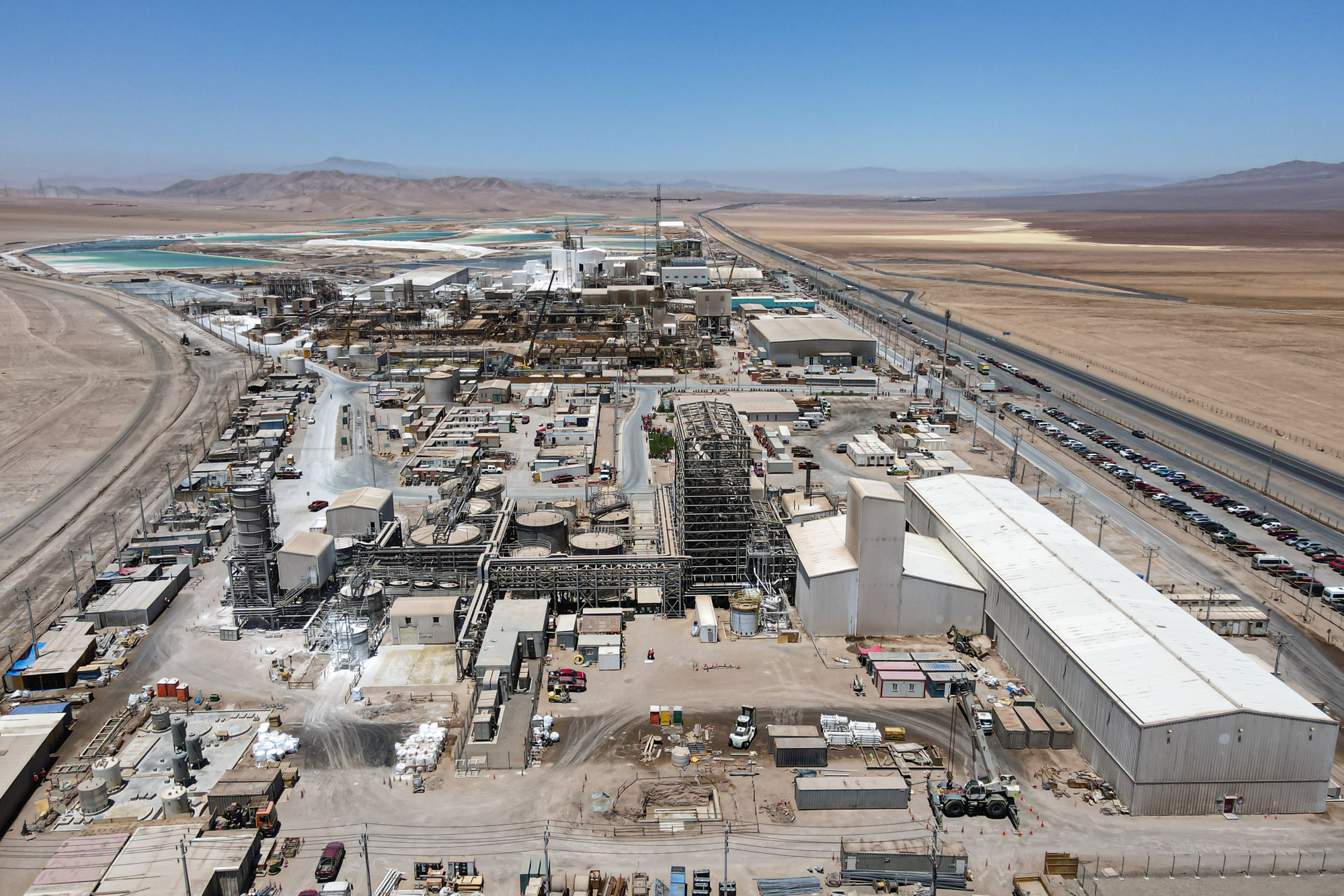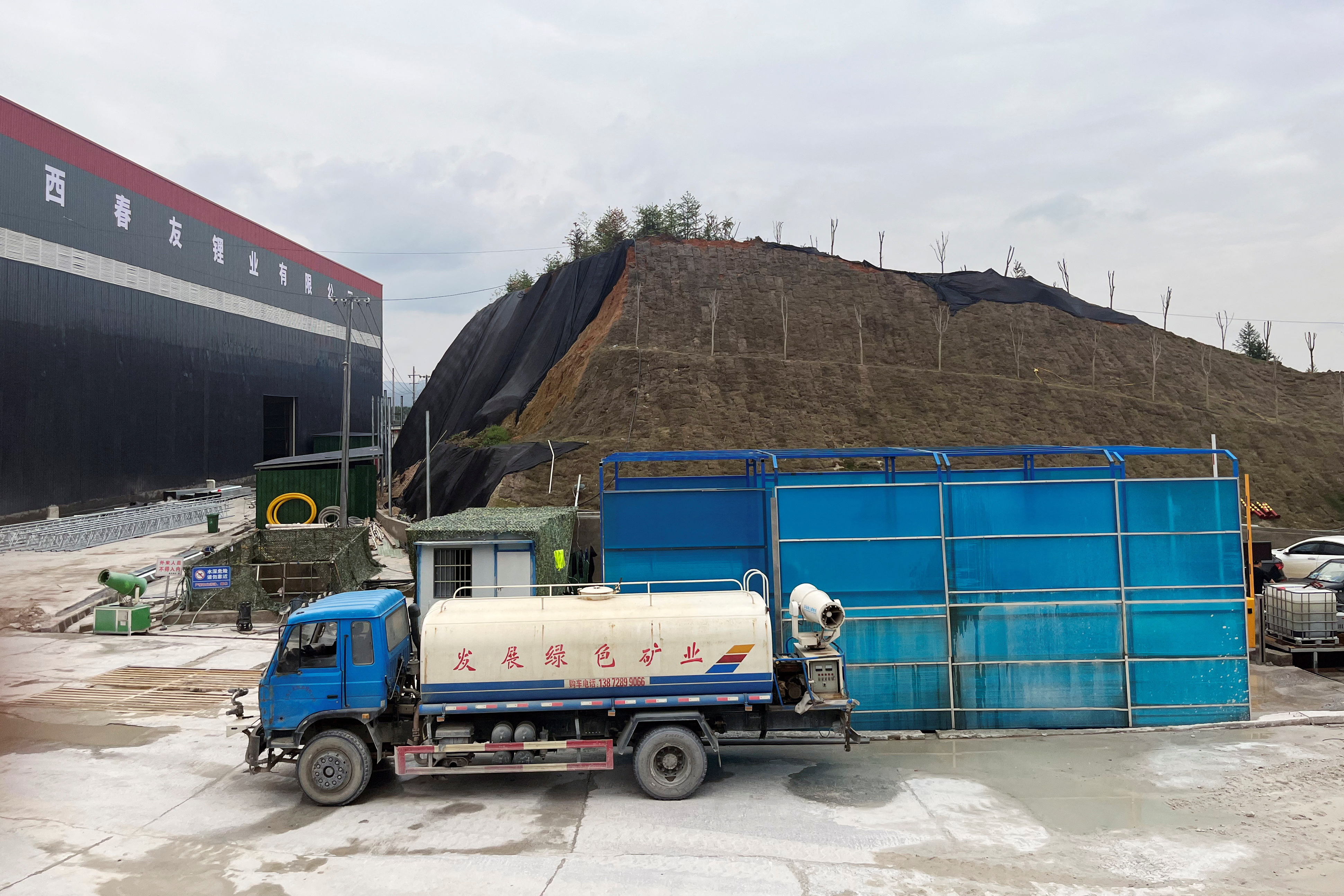
Chinese Battery Giant CATL Halts Major Lithium Mine as Global Producers Surge Up to 20 Percent
The Lithium Awakening: How One Mine's Silence Sparked a Market Revival
By Financial Markets Desk
August 11, 2025
SHANGHAI — In the predawn hours of Monday morning, as traders across Asia powered up their terminals, an unusual calm had settled over Contemporary Amperex Technology's sprawling Yichun facility in Jiangxi province. For the first time in years, the massive lithium operation that feeds the world's largest battery manufacturer had gone silent—not by accident, but by design.

The reverberations were immediate and profound. Within hours, lithium futures in Guangzhou hit their daily eight percent limit, while equity markets from Sydney to Santiago erupted in a frenzy of buying that saw some producers surge nearly 20 percent. What began as a routine license renewal had morphed into something far more significant: the first credible signal that an oversupplied industry was finally willing to impose discipline on itself.
The Yichun halt represents approximately 46,000 metric tons of annual lithium carbonate equivalent production—roughly three percent of global supply forecasted for 2025. While modest in absolute terms, this reduction strikes at the heart of a market that has been drowning in excess inventory and plummeting prices throughout 2024 and into 2025.
The rollercoaster ride of lithium carbonate prices from 2022 to 2025, showing the dramatic price collapse that preceded the recent market revival.
| Date | Price (USD/tonne) |
|---|---|
| December 2022 | $81,375 |
| June 2025 | $8,329 |
| August 2025 | $9,155 |
When Giants Blink: The Strategic Calculus Behind CATL's Move
Contemporary Amperex Technology's decision to allow its mining license to lapse on August 9 reflects a broader industrial awakening. As the world's dominant battery manufacturer, CATL possesses unique leverage in the lithium value chain—it can optimize margins across its entire vertical operation, from mine to finished battery cell.
Mining analysts suggest this represents a calculated strategic maneuver rather than mere administrative oversight. The company's integrated model allows it to sacrifice upstream margins temporarily to stabilize input costs across its broader battery manufacturing empire, effectively pressuring higher-cost independent miners while strengthening its own competitive position.
The timing appears deliberate. Lithium prices have collapsed below the marginal cost of production for many operations, particularly China's emerging lepidolite mines that represent a significant portion of new global supply. These facilities, converted from traditional mining operations, carry higher processing costs and greater environmental scrutiny than established hard-rock spodumene operations in Australia or brine facilities in South America.
The Arithmetic of Scarcity: Small Numbers, Massive Impact
Morgan Stanley analysts calculate that the Yichun suspension could eliminate the modest 60,000-tonne surplus they project for 2025, creating "upside risk to lithium prices in the short term" and potentially moving the market closer to balance should additional disruptions emerge.
The mathematics of this rebalancing reveal the market's fragility. Global lithium demand continues growing, driven primarily by electric vehicle adoption, but the growth rate has decelerated from earlier projections. European affordability pressures, shifting Chinese subsidy structures, and consumer hesitation around charging infrastructure have combined to create a demand environment that, while still expanding, falls short of the aggressive capacity expansions undertaken during the 2021-2022 price spike.
Global Electric Vehicle Sales and Adoption Trends, 2015–2025 (Historical and Projected)
| Year | Annual EV Sales (millions) | Global EV Fleet (millions) | Market Share of New Car Sales | Key Notes |
|---|---|---|---|---|
| 2015 | ~1 cumulative | ~1 cumulative | 20% | China reaches 50% EV sales share; US at ~10% |
| 2025* | 20+ | ~75 | ~25% | Growth moderating (+28% vs +35% in 2023) |
This mismatch has created what industry veterans describe as a "thin surplus"—an oversupply condition so modest that even minor supply disruptions can flip the market dynamic entirely. The Yichun halt demonstrates how quickly sentiment can shift when marginal tons disappear from an already precarious balance.
The Lepidolite Dilemma: China's Swing Supply Challenge
Central to understanding the current market upheaval is the role of lepidolite processing in China's lithium expansion. Unlike traditional spodumene hard-rock mining or brine extraction, lepidolite processing involves converting mica-based minerals into lithium compounds—a technically complex and environmentally sensitive process that carries higher operating costs.
Lithium is primarily sourced from two distinct types of deposits: salt-water brines and hard-rock minerals. Brine extraction involves evaporating lithium-rich water, while hard-rock mining requires crushing common ore like spodumene or the less-frequently processed mineral, lepidolite, to access the element.
These facilities have become the industry's marginal producers, able to operate profitably only when lithium prices exceed certain thresholds. As prices collapsed throughout 2024, lepidolite operations increasingly found themselves underwater, making them prime candidates for curtailment or suspension.

The regulatory environment surrounding these operations adds another layer of complexity. Environmental oversight in Jiangxi province has intensified, creating additional compliance costs and operational uncertainty. Some market participants view the Yichun license situation as reflecting broader scrutiny of lepidolite processing rather than isolated administrative issues.
Market Mechanics: From Surplus to Squeeze
The violent market reaction to CATL's announcement reveals underlying structural tensions that extend beyond simple supply arithmetic. Lithium markets have operated in a state of nervous equilibrium, with producers reluctant to curtail production despite weak pricing, hoping competitors would blink first.
CATL's move appears to have broken this standoff. As the industry's most significant vertically integrated player, the company's willingness to sacrifice its own production sends a powerful signal about acceptable price levels and market discipline expectations.
Morningstar's analysis characterizes the suspension as "an indication that the industry is taking proactive steps to contain further lithium price falls." This interpretation suggests the halt represents not merely operational necessity but strategic market management—a coordinated effort to establish price floors and encourage broader supply discipline.
The EV Equation: Demand Growth Meets Reality
Underlying the supply-side drama is a more fundamental question about electric vehicle adoption trajectories. While EV sales continue expanding globally, growth rates have moderated from earlier projections, creating the demand shortfall that enabled oversupply conditions to emerge.
European markets face affordability challenges as government incentives expire and economic pressures mount. Chinese consumers, having driven explosive early adoption, now exhibit more selective purchasing behavior as the market matures. American buyers remain cautious about charging infrastructure and vehicle residual values, slowing anticipated adoption curves.
These demand dynamics interact with inventory management strategies throughout the value chain. Battery manufacturers and automotive OEMs deliberately reduced stockpiles throughout 2023 and early 2024, renegotiating supply contracts away from peak pricing levels. This destocking amplified spot price declines, creating the margin pressure that ultimately forced supply-side responses.
Investment Implications: Navigating Volatility and Value
For sophisticated investors, the current market disruption presents both opportunities and risks that demand careful calibration. The most immediate beneficiaries are low-cost producers with strong balance sheets and integrated refining capabilities—operations that can capture upside during price recoveries while maintaining profitability during downturns.

Quality differentials may expand significantly. Tier-one spodumene operations in Australia and established brine facilities in South America possess structural cost advantages and jurisdictional stability that become more valuable during periods of regulatory uncertainty. Conversely, higher-cost lepidolite operations face existential challenges if prices fail to recover sustainably.
The timing dynamics create particular complexity for junior developers and exploration companies. While initial market reactions have lifted all lithium equities, sustainability depends on whether current supply discipline translates into longer-term investment deferrals that could tighten 2026-2027 supply balances.
Technology's Double Edge: Sodium-Ion and the Future Mix
Parallel technological developments add another dimension to lithium market evolution. Sodium-ion battery chemistry, championed by CATL itself, offers potential alternatives for cost-sensitive applications like stationary energy storage and entry-level electric vehicles.
Sodium-ion batteries operate on a similar principle to lithium-ion, shuttling ions between a cathode and an anode to store and release energy. Their primary advantage is the use of sodium, an element that is significantly more abundant and less expensive than lithium. This makes them a promising and more sustainable alternative, particularly for large-scale energy storage.
While sodium-ion technology cannot replace lithium across all applications—particularly in premium vehicles where energy density remains paramount—it could moderate lithium demand growth in segments where cost trumps performance. This technological diversification provides another tool for managing input cost volatility while potentially capping lithium price recoveries.
The interplay between supply discipline and technological alternatives creates a complex optimization problem for integrated manufacturers like CATL. Managing upstream lithium costs through strategic production decisions while simultaneously developing alternative chemistries represents sophisticated supply chain hedging.
Looking Forward: Scenarios and Signposts
The sustainability of the current price recovery depends critically on several key variables that investors should monitor closely. The terms and timing of CATL's license renewal will provide immediate signals about whether the supply withdrawal represents temporary disruption or longer-term strategic positioning.
More broadly, the response of other lepidolite operations to improved pricing will determine whether the market moves toward genuine balance or merely experiences temporary tightening. Fast restart capabilities for these facilities mean price recoveries could attract rapid supply responses, capping upside potential.
A forecast of the global lithium market balance, illustrating the delicate surplus that can be easily tipped into a deficit by supply disruptions.
| Year | Projected Market Balance (metric tons LCE) | Source |
|---|---|---|
| 2025 | +10,000 (Surplus) | Fastmarkets |
| 2026 | -1,500 (Deficit) | Fastmarkets |
| 2027 | Potential Deficit | Bank of America |
Demand-side developments remain equally crucial. Chinese electric vehicle retail performance, European registration patterns, and North American charging infrastructure deployment will ultimately determine whether current supply discipline can support sustained price improvement or merely delays inevitable oversupply pressures.
The convergence of these factors suggests a market entering a period of heightened volatility, where modest changes in supply or demand can generate disproportionate price responses. For investors, this environment rewards nimble positioning and careful attention to operational fundamentals rather than broad thematic exposure.